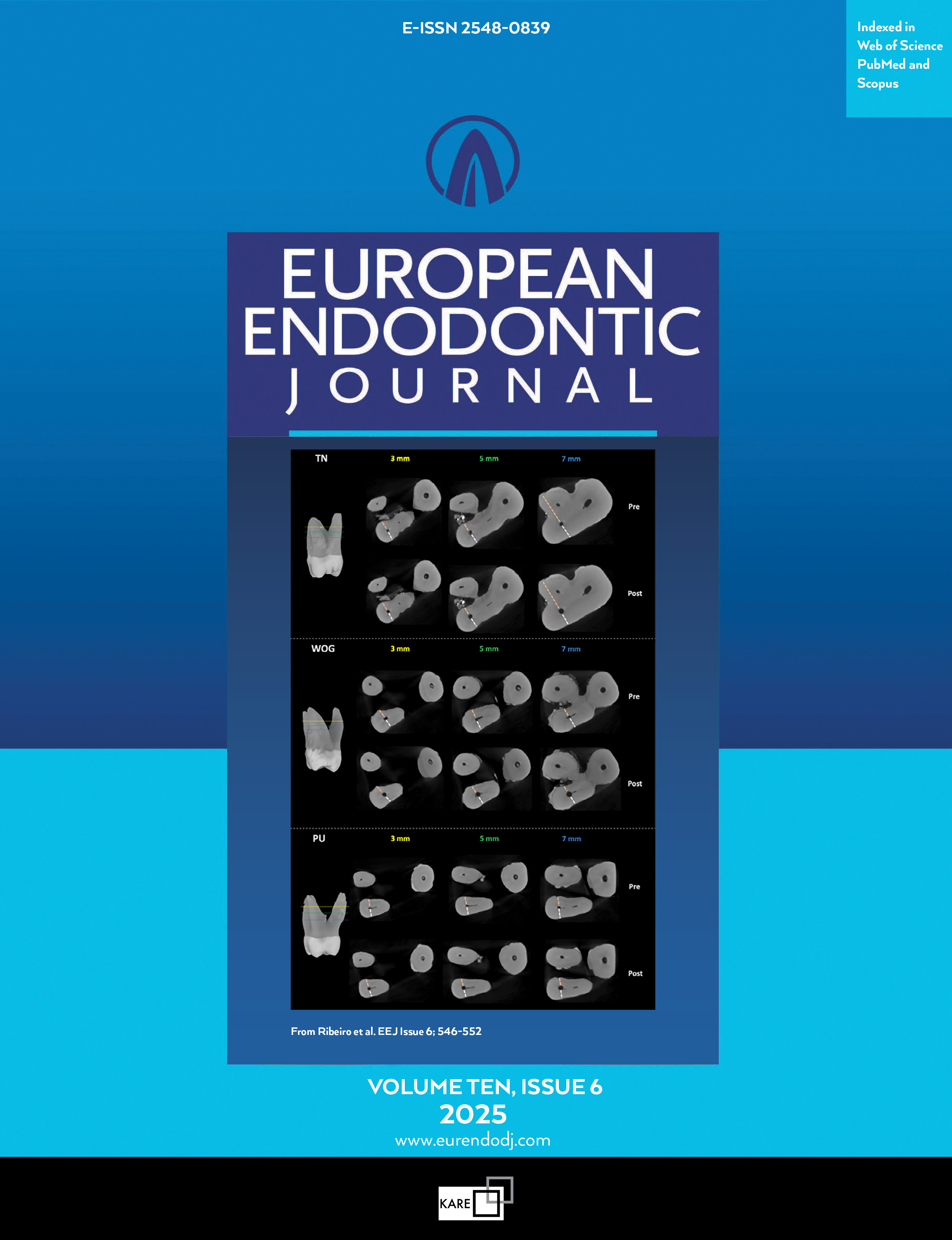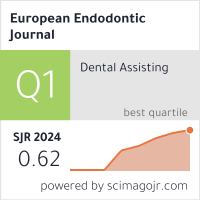Metrics
2024 IMPACT FACTOR
5 year Impact Factor
Eigenfactor Score
2024 CiteScore
Journal Citation Reports
(Clarivate 2025, JIF Rank)
Clinical Outcomes of Biomaterial Scaffolds in Regenerative Endodontic Therapy: A Systematic Review and Meta-analysis
Hossein Shahoon1, Anahita Dehghani Soltani2, Hormoz Dehghani Soltani3, Zahra Salmani4, Berahman Sabzevari5, Seyed Masoud Sajedi61Department of Oral and Maxillofacial Surgery, Faculty of Dentistry, Shahed University, Tehran, Iran2Department of Orthodontics, School of Dentistry, Shahid Beheshti University of Medical Sciences, Tehran, Iran 3Periodontist, Private Practice, Tehran, Iran
3Periodontist, Private Practice, Tehran, Iran
4Department of Periodontics, Faculty of Dentistry, Alborz University of Medical Sciences, Karaj, Iran
5Orthodontist, Private Practice, Mashhad, Iran
6Department of Oral and Maxillofacial Medicine, Faculty of Dentistry, Shahed University, Tehran, Iran
Blood clot, platelet-rich fibrin, and plasma-rich plasma are the three most commonly used scaffolds in regenerative endodontic therapy. The current study aimed to evaluate the clinical outcomes of plasma-rich plasma (PRP) and platelet-rich fibrin (PRF) scaffolds and blood clot (BC) in regenerative endodontic therapy. For this systematic review and meta-analysis, international databases such as MEDLINE (PubMed and Ovid), Web of Science, and Scopus were searched between January 2013 and November 2023 using keywords relevant to the study objectives. Randomized controlled trials published in English that investigated the effects of BC, PRF, and PRP interventions compared to each other on permanent teeth with a six-month follow-up period were included in the study. The risk of bias was assessed using the Cochrane tool for randomized trials. Data were analyzed using STATA/MP software, employing odds ratios with fixed and random effects models in the meta-analysis. Fourteen randomized clinical trials involving 430 participants were reviewed. The present study did not reveal any statistically significant differences between BC and PRP regarding apical radiolucency healing (OR: -1.30, 95% CI; -2.68, 0.08; p=0.07, I2=0%, p=0.91) and apical closure (OR: -0.29, 95% CI; -1.07, 0.49; p=0.47, I2=32.63%, p=0.20). However, root-length increase in BC was greater compared to PRP (OR: 3.18, 95% CI; 2.78, 3.57; p<0.01) and PRF (OR: 1.75, 95% CI; 1.38, 2.13; p<0.01). The risk of bias was low for all studies, based on the Cochrane tool. BC is the preferred primary scaffold in regenerative endodontic therapy, while PRP and PRF are recommended for cases of severe canal bleeding. (EEJ-2024-05-079)
Keywords: Blood clot, platelet-rich fibrin, platelet-rich plasma, scaffold
Manuscript Language: English
(538 downloaded)



